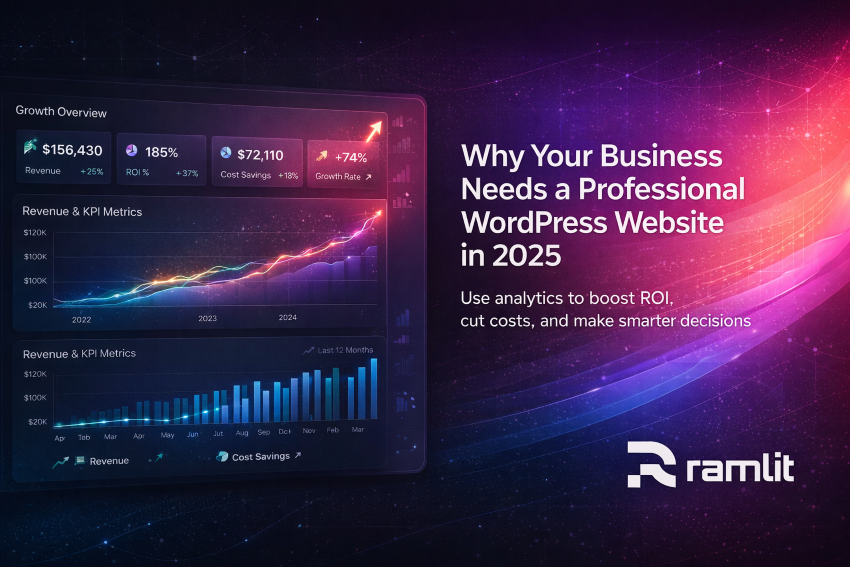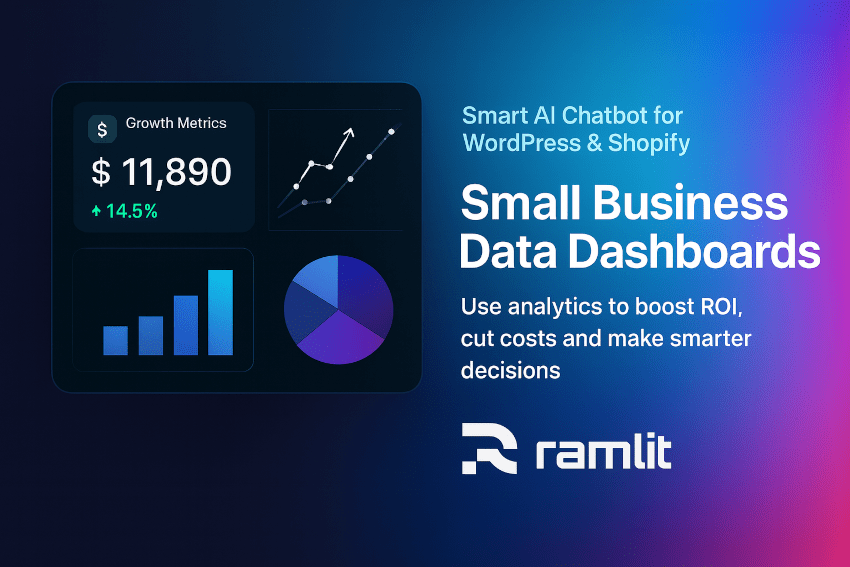Introduction
If Shopify dropshipping still feels complicated, you’re not alone. The truth is, most stores fail for the same reasons: random product picks, weak margins, unfocused pages, and “spray-and-pray” marketing. In 2026, shoppers expect speed, clarity, and trust at every click—and platforms reward stores that deliver all three. This guide cuts through noise and gives you a proven, step-by-step strategy to go from zero to first sales—and then to scalable, sustainable growth. It’s written for entrepreneurs and operators who want a simple blueprint that actually translates into revenue: the niche to target, the way to validate demand, the math to protect your margins, and the conversion and marketing systems that compound. By the end, you’ll have a clear plan you can ship this week—from setup to first sale and beyond—without guesswork or gimmicks.
The 2026 Mindset: Simple, Fast, Profitable Shopify dropshipping works when you run it like a product-led business, not a product lottery. That means three principles:
Buyer-first positioning: Start with a segment and a recurring problem. Let the buyer define the product, not the other way around.
Margin clarity: Price, costs, and marketing targets are decided before launch—not after.
Compounding assets: High-performing product pages, creative libraries, and email flows that improve over time, not just ad campaigns that reset weekly.
Everything below flows from these three ideas.
Step 1: Choose a Buyer-Led Niche (Not Just a Product) “Winning products” change. Winning buyers don’t. Your niche should be a clear promise to a specific group with repeatable problems. Use this one-sentence test:
We help [buyer] solve [problem] with [approach/angle]. Examples:
“Compact home-office upgrades for small apartments.”
“Travel-friendly pet essentials for urban dog owners.”
“Beginner-friendly indoor garden kits for small balconies.”
Why this works
Product selection gets easier: you only choose items that fit your promise.
Ads and content get cheaper: your message stays consistent across channels.
Retention improves: you can layer bundles, refills, and upgrades over time.
Action: Write your buyer-led promise and use it as a filter for every decision that follows.
Step 2: Validate Demand and Delivery Risk (Before You Commit) Great marketing can’t save poor delivery. Validate both demand and logistics. Demand sanity checks
Search language: Do buyers already use problem and solution phrases? (e.g., “airline-approved cat carrier,” “desk riser for small spaces”).
Demonstrability: Can the product be shown clearly in a 10–15s video?
Comparable offers: Are there multiple merchants? Competition is a sign of demand—monopolies often signal supply risk.
Delivery sanity checks
Weight/size: Prefer products under ~2 kg with simple variants.
Compliance: Avoid categories with complex certifications if you can’t verify.
Redundancy: At least two reliable suppliers with consistent SKU data and tracked shipping.
Green flags: Many long-tail buying phrases, clear video demos, multiple supplier options. Red flags: Trademarked phrases on products, fragile or oversized items, one-supplier dependence. Action: Shortlist 3–5 products that fit your promise. Document supplier links, costs, variants, shipping options, and realistic retail prices.
Step 3: Margin Math That Protects Your Growth Growth without margin is a slow-motion failure. Set your numbers first. Baseline structure:
Retail (R)
Product Cost (C)
Shipping/Fees (S)
Marketing per Order (M)
Net Profit = R − (C + S + M)
Profit Margin % = Net Profit / R
Targets to work with:
Aim for healthy gross margin before ads (R − (C + S)) to leave room for M.
Define break-even CPA (BECPA) = R − (C + S). Keep early ad CPA at or under this number.
Plan AOV boosters (bundles, quantity breaks, cross-sells) to lift order value without complicating shipping.
Action: Build a one-page margin sheet per product with three price points, expected fees, BECPA, and AOV boosters. Make decisions from this sheet—not from hunches.
Step 4: Build the Store Right—Fast, Trustworthy, Mobile-First Your store’s job is simple: make it obvious, easy, and safe to buy. Core Shopify setup
Domain: Connect a short brand domain immediately (trust signal).
Payments: Enable Shopify Payments and major wallets; turn on accelerated checkout (Shop Pay, Apple Pay, Google Pay when available).
Checkout: Keep it short; enable address auto-complete if supported.
Taxes & shipping: Name shipping options clearly (e.g., “Tracked Standard 5–9 days”). Set expectations upfront.
Theme & speed
Choose a lightweight, mobile-optimized theme.
Keep the homepage short: value statement, top categories, bestsellers, social proof, footer policies.
Compress hero images; avoid autoplay video backgrounds.
Trust & compliance
Publish Privacy, Refund, Shipping, Terms in the footer.
Provide visible contact methods (email + simple form).
Add a Track Order link.
Show security and payment badges near checkout.
Action: Launch with a lean store that gets to product pages quickly. Don’t over-build the homepage; invest that effort into your product pages.
Step 5: Product Page That Sells (Your Money Page) Treat each product page like a mini-landing page: benefit-led, proof-driven, and friction-free. Above the fold
Clear name + primary benefit: “Compact Laptop Stand — Better Posture in Small Spaces.”
Price, stock (only if true), and quantity selector.
Primary CTA: Add to Cart + accelerated checkout buttons.
Trust strip: “Tracked shipping • Easy 30-day returns • Secure checkout.”
Below the fold
Hero value block: 3–5 bullets in plain language, focused on outcomes.
Media: Lifestyle photos, clear scale shots, and a 10–15s demo video.
Specs & sizing: Dimensions, materials, compatibility, care.
FAQ: Shipping times, returns, how to use, what’s in the box.
Variation logic
If you have variants (size/color), auto-update imagery and SKU to prevent cart issues and reduce returns.
Action: Publish one flagship product page with complete media, benefits, specs, and a practical FAQ. Then optimize it, not your homepage.
Step 6: Suppliers, Shipping, and Quality Control Dropshipping lives or dies on consistency. Build redundancy into your ops. Supplier checklist
Tracked, realistic shipping options.
Handling time within a predictable window.
Responsiveness and clear returns process.
Stable product data: variants, SKUs, specs.
Usable assets: dimensional imagery or lifestyle photos.
Practical workflow
Before launch: Order samples for photo/video and quality checks whenever feasible.
At launch: Confirm handling and delivery windows region-by-region.
After launch: Maintain a backup supplier and monitor any changes in SKU details or packaging.
Action: Message 2–3 suppliers per product with specific questions about shipping timelines, returns, packaging, and replacement policies.
Step 7: Pricing, Bundles, and AOV Revenue buys time. Profit funds growth. Improve both with clean offers.
Price testing: Start with your baseline price. Test ±10–15% to find the conversion sweet spot.
Bundles: “Starter,” “Pro,” “Family/Pairs” anchored with the highest-value bundle on the right.
Quantity breaks: Light incentives at 2+, 3+, 5+ units—make it obvious on the page.
Add-ons: Low-friction accessories that ship with the main item.
Premium shipping: Offer an optional upgrade for buyers who value speed.
Action: Add at least one quantity break and one complementary add-on to your flagship product.
Step 8: Essential Apps & Automations (Keep It Light) Every app adds weight. Only install what increases conversion or saves time.
Reviews/social proof: Import authentic reviews you’re authorized to use; collect new reviews post-purchase.
Email & SMS: Abandoned checkout, post-purchase tips, shipping notifications, review requests.
Upsell/cross-sell: In-cart add-ons and a post-purchase one-click offer.
Analytics: First-party tracking where available; validate events (view, ATC, checkout, purchase).
Action: Set up abandoned checkout flow, “order on the way” notifications, and a post-purchase cross-sell for a logical add-on.
Step 9: Creative That Converts (UGC + Clarity > Polish) Ads don’t sell products—angles do. Create a small, sharp library. Core creative types
Problem → solution demo (10–15s): Show the pain, show the fix, show the outcome.
Before/after: Visual proof beats adjectives.
UGC/testimonial: Real use in real life.
Explainer: Voiceover + fast cuts for features/benefits.
Comparative: “Why this vs alternatives?” framed respectfully.
Hook ideas
“Stop wasting space…”
“Airline-approved, stress-free travel for your cat…”
“From cluttered desk to posture-friendly setup in 10 seconds.”
Action: Record a simple demo video today. You can refine later—proof matters more than perfection.
Step 10: Your 14-Day Launch Plan (Speed to Signal) You’re validating a system, not just a product. Move fast, measure, adjust. Days 1–3: Assets
Photos (lifestyle + scale), one demo video, three short social posts.
A 1-pager “cheat sheet” for your product: benefits, specs, competitor comparisons.
Days 4–7: Organic Seeding
Post daily short-form content (solve one small problem per video).
Engage niche communities with helpful replies; link only when relevant.
Offer a small early-bird discount for first buyers in exchange for feedback.
Days 8–14: Paid Validation
3–5 ad creatives (different hooks) to the product page.
Optimize for purchase events; track cost per add-to-cart, checkout, purchase.
Kill losers quickly once spend is meaningful relative to BECPA.
Nudge winners up by manageable increments or duplicate to fresh audiences.
Targets to watch:
Landing page view → add-to-cart rate in a healthy range for initial intent.
Ad CPA under or near BECPA while you gather data.
First sales within the window.
Action: Publish the first 15-second demo and run three angles side-by-side. Let data—not debate—pick the winner.
Step 11: Email & Retention (Profit on the Table) Acquisition is expensive; retention is where margin compounds.
Pre-purchase: Browse abandonment (soft reminders, benefits recap).
Abandoned checkout: Clear, friendly nudge with FAQ snippets.
Post-purchase: “Getting started” tips, care instructions, and an add-on offer.
Review request: After delivery, invite feedback with a small incentive if your policies allow.
Win-back: Simple “we picked these for you” personalized recommendations.
Action: Launch three flows first: abandoned checkout, post-purchase tips, and review request.
Step 12: Operations, Trust, and Support The smoothest path to growth is fewer surprises.
Transparency: Set shipping expectations before purchase and repeat them in emails.
Returns: Keep the policy fair and clear.
Fraud filter: Manual review for high-risk orders.
Support templates: Common Q&As for shipping, sizing, and troubleshooting.
Tracking: Encourage customers to track orders; reduce “where is my order” tickets.
Action: Add a short trust line under the primary CTA: “Tracked shipping • Easy 30-day returns • Secure checkout.”
Step 13: Analytics That Actually Drive Decisions Measure only what you’ll act on.
Unit economics: AOV, gross margin, CPA, ROAS, net profit per order.
Funnel: Landing view → add-to-cart → checkout → purchase.
Operations: Delivery times and refund reasons by region/method.
If profit is thin: Revisit price, AOV boosters, or supplier costs. If conversion is weak: Audit media clarity, value proposition, and load time. Action: Create a simple tracker (spreadsheet or app) for daily spend, revenue, and units sold. Add conditional coloring for BECPA.
Step 14: Handling Objections (Before They Cost You) Your buyers think these thoughts—answer them on the page.
“Shipping will be slow.” Be explicit about windows, provide tracking, and share your handling time.
“Is quality consistent?” Use clear photos, dimensional specs, and—if possible—short demo clips.
“Is this legit?” Branded domain, policies in footer, contact options, and reviews all visible.
“What if it doesn’t fit/work?” Practical FAQs and a straightforward returns summary.
Action: Add a “What you’ll love / What to know” block. Honesty builds trust and reduces returns.
Step 15: Scale What Works (Depth → Breadth) Don’t rush into new products; make the winner work harder first.
Depth: Improve the hero offer (better bundle, variant clarity, upsell).
Breadth: Introduce 1–2 complementary items sharing the same buyer and promise.
Ops: Create a simple fulfillment SOP: order sync → supplier order → tracking → customer email → delay handling.
Advertising: Move best creatives into creator partnerships or allowlist programs when appropriate.
Action: Write a 5-step SOP and save it in your operations doc. Growth becomes repeatable when steps are documented.
Step 16: Competitor Awareness (Differentiate on Experience) You’re not just competing on product—you’re competing on clarity and experience.
Many stores race to the bottom on price. You win with positioning, page clarity, and support.
Big brands often move slowly. You win with speed to creativity—fresh hooks, real demos, and tighter landing pages.
Some stores drown in apps. You win with fast load times and lean funnels.
Ask yourself weekly: Where is our experience clearly better than the alternative? Then double down there.
Step 17: Roadmap for the Next 90 Days Your first two weeks validated the system. Now compound. Days 15–30
Refine your hero product page based on early questions.
Expand ad angles using proven hooks.
Add one new AOV booster (bundle or add-on).
Days 31–60
Introduce 1–2 complementary products aligned with the same buyer promise.
Improve email flows with segmentation (new vs returning).
Optimize top-performing creatives with fresh intros and overlays.
Days 61–90
Standardize support replies and logistics SOPs.
Explore a secondary traffic source once your first is stable.
Consider creator whitelisting or partnerships to widen reach.
Action: Schedule weekly reviews (30 minutes). Adjust price, creative, and pages based on real signals—not assumptions.
- Bullet Points / Quick Takeaways
Start with a buyer-led promise, not a random product.
Validate demand and delivery before you commit.
Lock in margin math and BECPA so you scale profitably.
Keep the store lean and fast; invest in product pages over your homepage.
Build pages like mini-landing pages: benefits, proof, specs, FAQ.
Use redundant suppliers and tracked shipping to reduce risk.
Lift AOV with bundles, quantity breaks, and add-ons.
Launch fast with a 14-day plan: assets → organic → paid validation.
Turn first buyers into profit with email flows and post-purchase tips.
Track unit economics and funnels—only what you’ll act on.
Handle objections on the page to increase conversion and reduce refunds.
Scale depth before breadth; document SOPs for repeatability.
Call to Action (CTA)
Ready to launch your 2026 Shopify dropshipping store the right way? Start by writing your buyer-led promise and publishing one conversion-ready product page today. Then run the 14-day plan to validate demand and make your first sales—fast, simple, and profitable.
FAQ Section
- How many products should I start with? Begin with one flagship product and, at most, two complementary items. A focused offer lets you perfect your page, creatives, and unit economics. You can expand once you have repeatable sales.
- What budget do I need to test ads? Work backward from your break-even CPA (BECPA) using your margin sheet. Allocate enough to let each creative reach meaningful data for add-to-cart and purchase events, then cut losers quickly and lean into winners.
- Is Shopify dropshipping still viable in 2026? Yes—when you differentiate with buyer-led positioning, clear pages, reliable delivery, and honest marketing. You’re not competing on gimmicks; you’re competing on clarity and experience.
- How do I keep shipping times from killing conversions? Set expectations on the product page, use tracked methods, provide order tracking links, and be proactive in email updates. Redundant suppliers help you avoid stock or timeline surprises.
- What’s the fastest way to improve conversion rate? Tighten your above-the-fold value, add a short demo video, clarify shipping and returns, and remove page friction. Then test price and bundles—small changes often move the needle most.
Quality Checks
CTR-optimized title? Yes—keyword-focused with benefit framing.
Meta description concise and compelling? Yes—clear benefits and topic.
Skimmable structure and logical flow? Yes—steps, actions, and headings.
Objections and questions addressed? Yes—shipping, viability, budget, conversion.
Actionable, trustworthy, and conversion-oriented? Yes—specific steps, math, and processes you can implement today.



